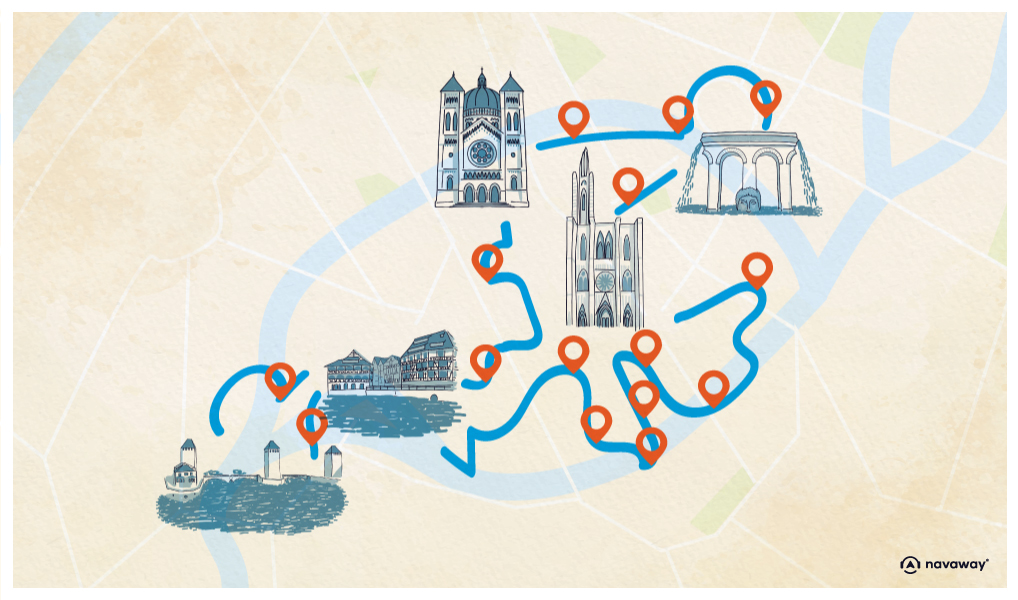
Notre-Dame Cathedral
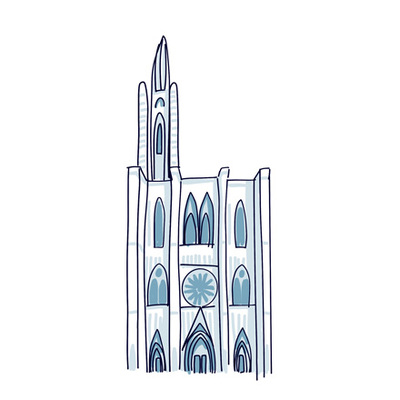
This point of interest is available as audio on the tour: Visit Strasbourg, From Petite France to Greater Europe
You’re standing in front of Strasbourg’s Notre-Dame Cathedral; about 4 million people visit it every year. It’s a “gigantic and delicate marvel” as Victor Hugo put it. Up until 1874, it was even the tallest religious building in the world! Today, with its 142 m spire, it’s the second-tallest cathedral in France, second only to the Notre-Dame of Rouen. Take some time to admire its many façades; you won’t be disappointed. I strongly encourage you to take a tour of the cathedral and take a closer look at the details carved into the sandstone. You could spend hours there, for such is the quality of the workmanship. There are hundreds of sculptures opening a direct window into the history of the Middle Ages. I leave you to admire the finesse of the work and search for the symbols and parables of the Christian world etched on stone. I’d now like to draw your attention to a couple of features of the entrance. As you can see, it’s made up of three portals. The one on the left recounts Christ’s childhood, framed on either side by statues representing the virtues, triumphing over the vices. If you take a closer look at the central portal, you’ll see that it’s dedicated to the Passion of Christ. In the third row, above the crucifixion, you’ll see an interesting depiction of hell, with the devil lying down and a child standing on top of a traitor, of whom we can only see the suggestive backside. As for the vaulted ceilings, they are entirely carpeted with scenes from the Old and New Testaments. The portal on the right is among the cathedral’s most famous, for its version of the Parable of the Virgins. On the left, you see the Tempter, aka Satan, offering the forbidden fruit to the 5 foolish virgins. Opposite them, on the other side, are the 5 wise virgins, waiting for the perfect husband. If you take a closer look at the devil’s back, you’ll see that it opens up and reveals its true nature, as toads and snakes crawl out. It was in 1220 that the free imperial city of Strasbourg decided to rebuild its Romanesque cathedral on the lines of Gothic architecture, which was very popular in the 13th century. The city was wealthy and could afford to splurge a little. The construction was more or less completed in 1365; it was officially considered finished in 1439, following the erection of its one and only spire. Fashioned from pink Vosges sandstone, the cathedral’s façade becomes a canvas where light dances with shadow, casting delicate variations of color that accentuate the richness of its intricate decorations. But, of course, you can’t just go without pushing its hefty doors open to peek inside. Once you’re in, you can admire an array of beautiful stained-glass windows dating from the 12th to 14th centuries, including the immense and sublime rose window, considered a masterpiece of its kind. Be sure to look for the Pillar of Angels, an 18-metre-high representation of the Last Judgement; it’s one of the cathedral’s architectural jewels. If you turn around, you’ll see the sculpture of a man staring at the pillar, leaning against the balustrade. It is said that he’s the master builder who wasn’t chosen for the project and who’s waiting to see it crumble. There’s yet another feature you won’t want to miss: Hans Hammer’s pulpit. It’s a fine example of the flamboyant style of Gothic architecture, decorated with some 50 statues, including one of a small dog on the stair rail; legend has it that it’s a nod to the preacher Jean Geiler from Kaysersberg, who would come to the cathedral with his dog. In 1527, the city of Strasbourg adopted the Reformation and the cathedral was transformed into a Protestant temple. It then lost many Virgin Mary statues, as well as much of its furnishings. But it was also during this period that it acquired one of its most charming treasures: its astronomical clock. At the time, it was considered one of the 7 wonders of the Holy Roman Empire. This perpetual calendar completes one full rotation every year, moving up a notch each day. Legend has it that the city’s Magistrate had the poor watchmaker’s eyes gouged out so that he could never rebuild such a marvel. Try to come at 12.30 p.m. to see the automatons in action! You’ll see the apostles march before Christ, while personifications of the ages of life march before death. Each quarter-hour is thus announced, first by the child, then by the young man, followed by the middle-aged man and the old man. Extraordinary! The swallow’s nest organ, that is, the pipe organ suspended between the 2nd and 3rd floors, is also a sight not to be missed. You can even access the cathedral’s 66-metre-high platform, where the second spire was supposed to be built. You’ll need to pay an entrance fee, and be brave enough to climb 330 steps so as to reach the guard house and, of course, enjoy a breathtaking view of Strasbourg. This tour will give you an insight into how builders managed to lift stones to the top of their construction back then, using two treadwheel cranes which are still used today. Men would run inside, like a hamster in its wheel, thus effortlessly operating a system of pulleys. Ingenious, isn’t it? In a nutshell, Notre-Dame de Strasbourg will please both art lovers and the curious. It’s a must-see on your visit and absolutely worth exploring, both inside and out!


Discover Strasbourg with app
An interactive guide through the most beautiful streets, squares, and districts
32 fun audioguides full of historical facts, anecdotes, and legends
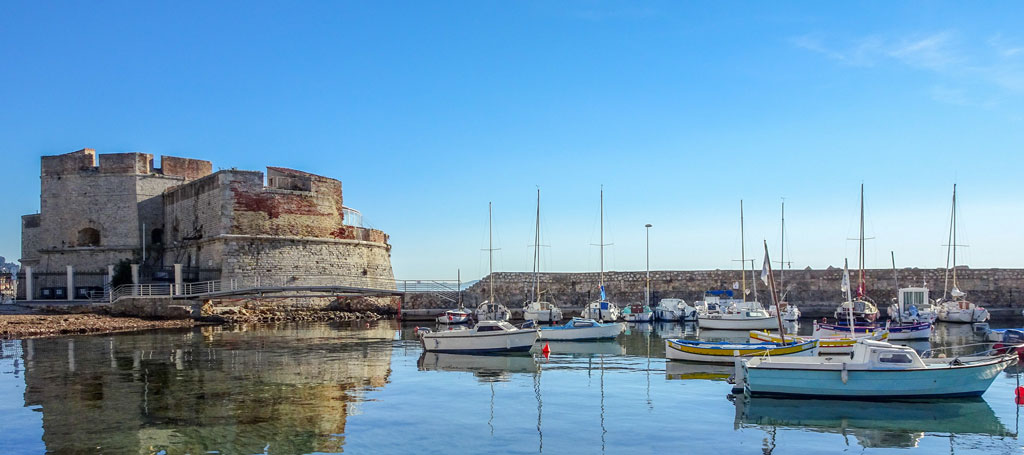
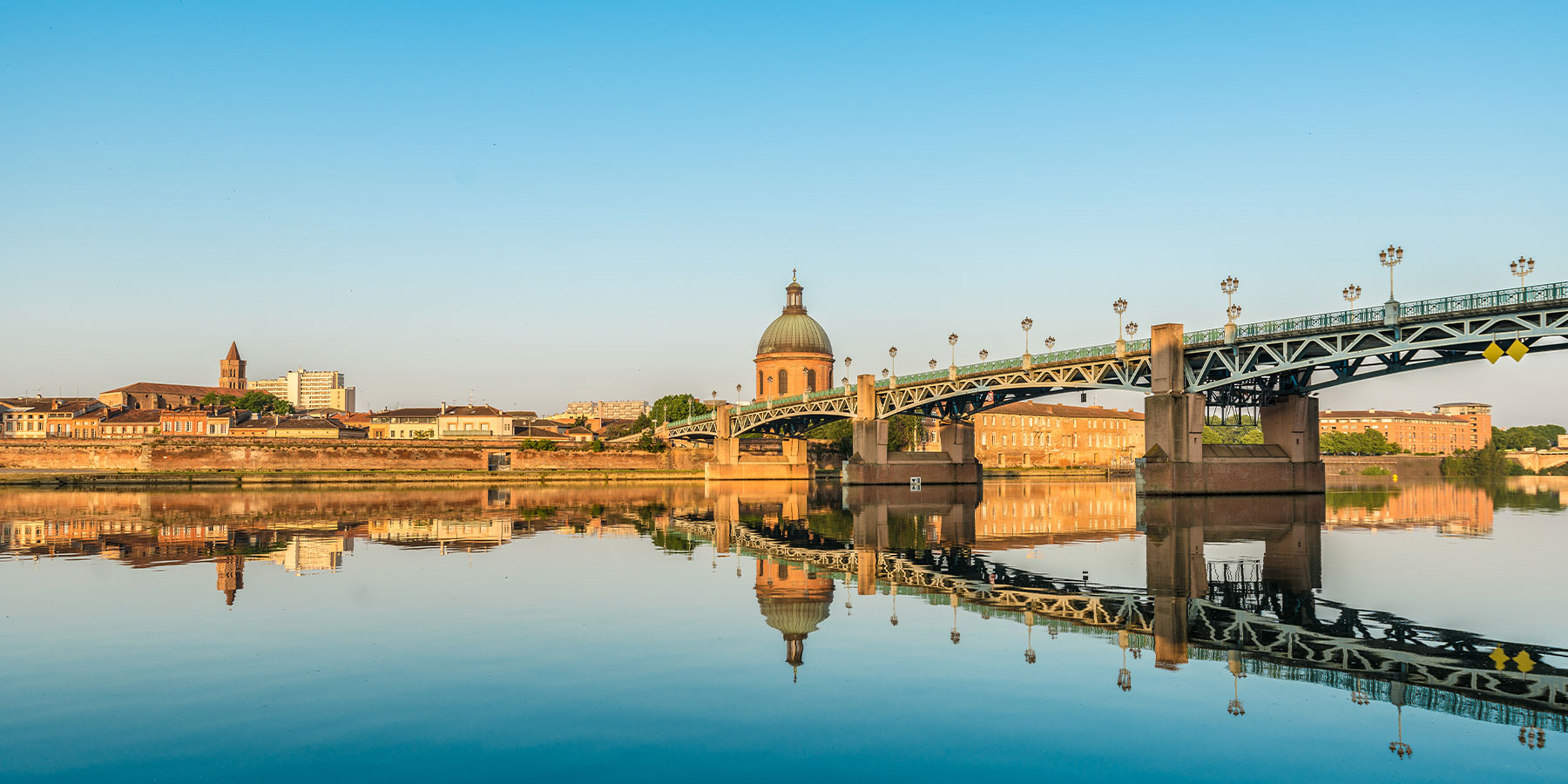
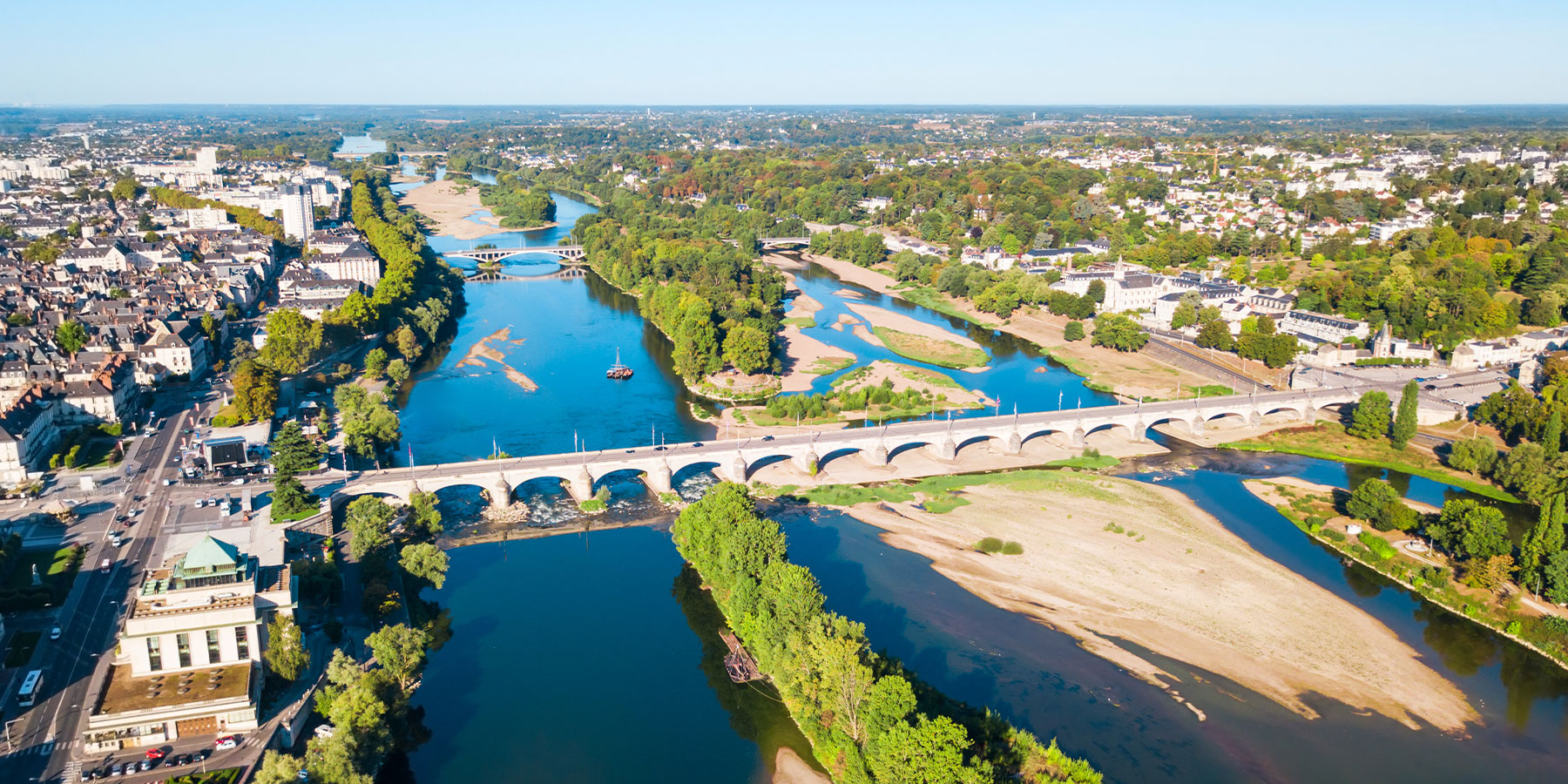


Comments